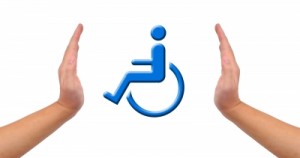Types of Vegetables for Candida Diet
 Eating plenty of vegetables is a great dieting strategy. Vegetables have all the essential nutrients and vitamins, they are perfect for healthy living. But, do all vegetables have equal benefits as a part of Candida diet? Candida diet puts a lot of stress upon what types of vegetables you should eat. To understand which type of vegetables are apt you must first know the basic goal of the Candida diet.
Eating plenty of vegetables is a great dieting strategy. Vegetables have all the essential nutrients and vitamins, they are perfect for healthy living. But, do all vegetables have equal benefits as a part of Candida diet? Candida diet puts a lot of stress upon what types of vegetables you should eat. To understand which type of vegetables are apt you must first know the basic goal of the Candida diet.
Candida diet provides the best course of action against a health condition known as Candidiasis which is caused by the microorganism Candida albicans. This is a type of yeast that develops in the intestinal system. Candida albicans ideally develop in the intestinal system which has friendly types of bacteria responsible for keeping the body healthy. Some factors such as stress, diet high in processed foods, sugary foods, or overuse of steroids, antibiotics and oral contraceptives can cause a rapid growth of Candida. When there is overgrowth of Candida, the organisms release toxins into the body which leads to many health hazards. With the Candida diet food supply for the organisms is cut off, thus stopping its growth and multiplication. Some of the main culprits for Candida growth are vinegar, sugar, glutinous grains, fermented foods and carbohydrates. Some vegetables having high starch levels and complex grains are eliminated from the Candida diet plans. Though such vegetables do not break into sugar quickly, but in time do turn into sugar and feed the microorganisms. So, which vegetables should you eat when you are on a Candida diet?
- Bulb Vegetables: Vegetables such as garlic, chives, leeks, scallions, onions, shallots and chestnuts are great choices for Candida sufferers. This type of vegetable can add flavour to the meals. Garlic and onions also contain antifungal properties that help combating Candida albicans.
- Inflorescent Vegetables: Broccoli, artichokes, broccoli rabe and cauliflower can be safely consumed.
- Leaf Vegetables: This group of vegetables including Brussels sprouts, arugula, cabbage, collards, chicory, lettuce, endive, spinach and kale can be used to create healthy and delightful salads.
- Fruit Vegetables: Avocados, eggplant, cucumbers, peppers, okra and squash are ideal for yeast free meals.
- Stalk vegetables: Vegetables such as asparagus, chard, celery, kohlrabi and fennels are also ideal for people suffering from Candida.
The Root vegetables and Tuber vegetables should be eaten with care. Most of these vegetables contain starch that can be harmful for your Candida diet.
ABOUT AUTHOR: Olivia Kane is a freelance content writer by profession. She finds immense pleasure in writing health related article including candida diet.
Image: Piyachok Thawornmat / FreeDigitalPhotos.net
Related posts:



 Enlarge iStockphoto.com
Enlarge iStockphoto.com  Enlarge iStockphoto.com
Enlarge iStockphoto.com  What is short term disability insurance?
What is short term disability insurance? 
 Enlarge Pierre Virot/WHO
Enlarge Pierre Virot/WHO  Enlarge Matthew Scherf/iStockphoto.com
Enlarge Matthew Scherf/iStockphoto.com  Healthcare reform in US brings good news for women. Because the gender based health insurance industry and due to the gender, women are greater sufferers. They used to pay more and get less in return. But with implementation of new healthcare reform and “Affordable Care Actâ€, hopefully the biased against women in health care will be removed.
Healthcare reform in US brings good news for women. Because the gender based health insurance industry and due to the gender, women are greater sufferers. They used to pay more and get less in return. But with implementation of new healthcare reform and “Affordable Care Actâ€, hopefully the biased against women in health care will be removed.